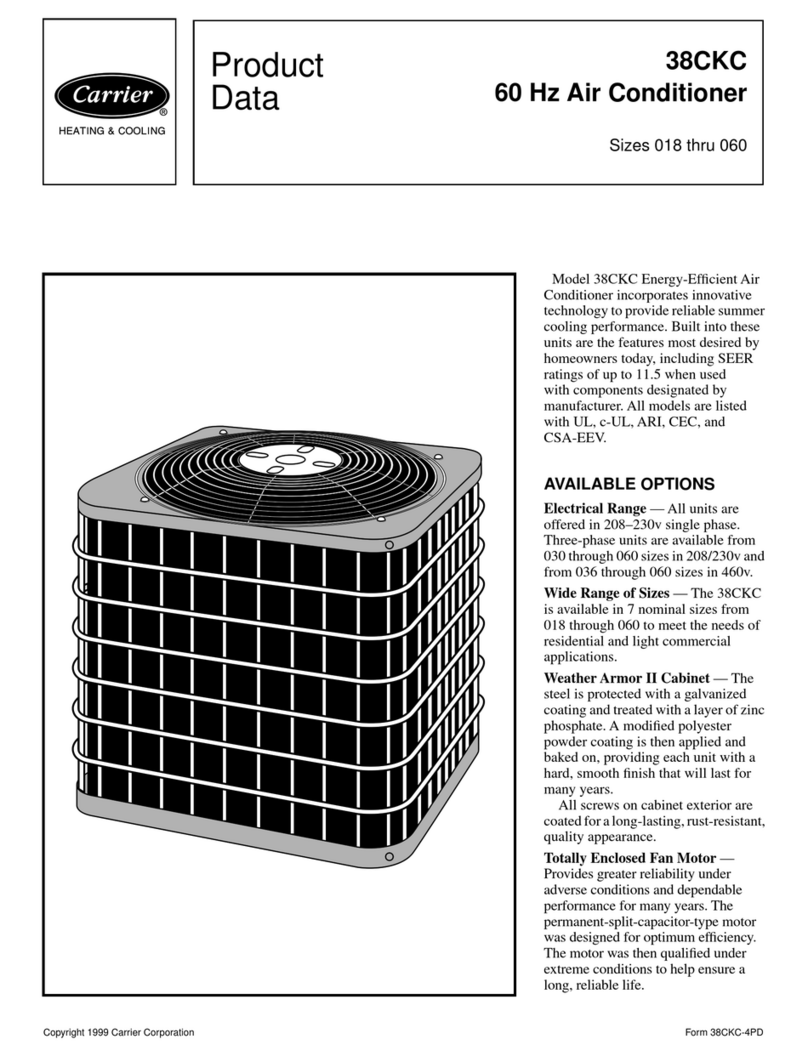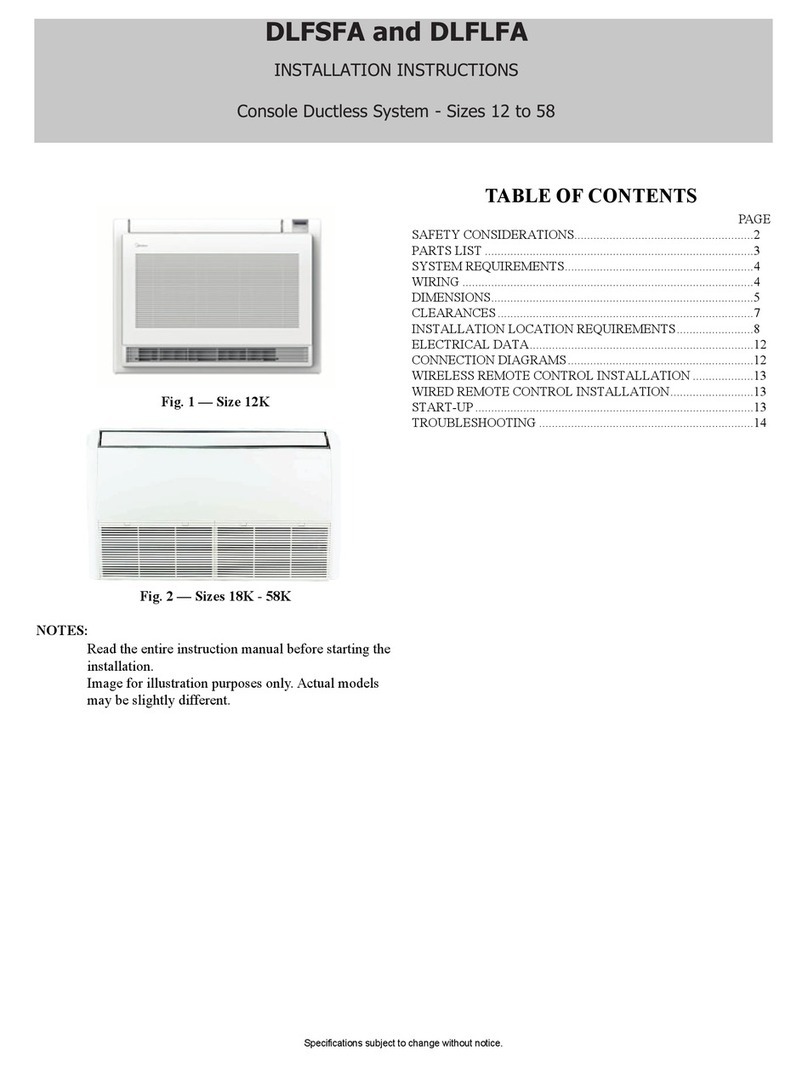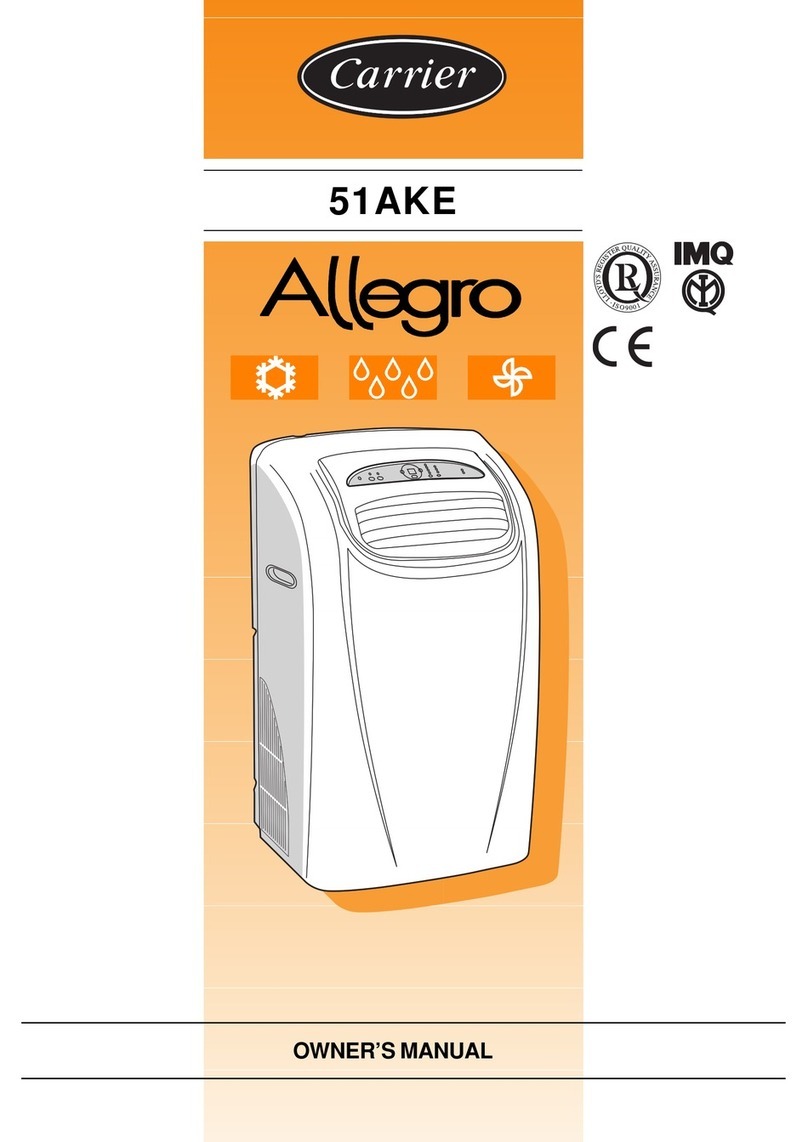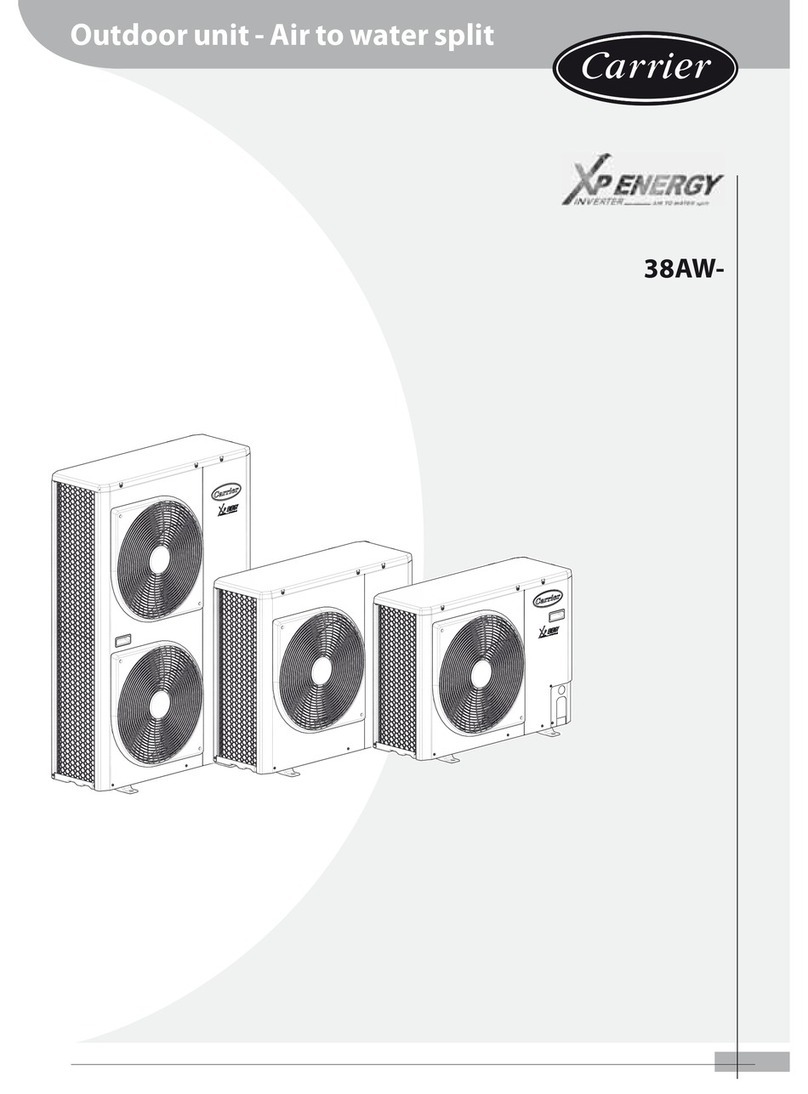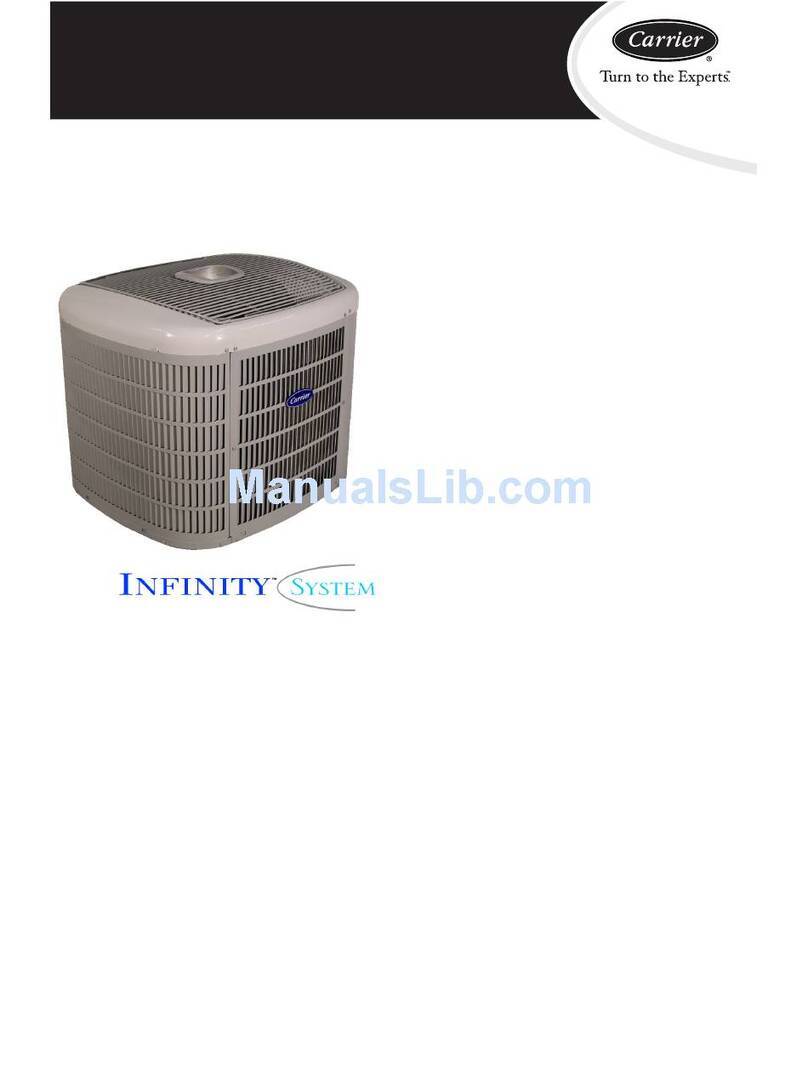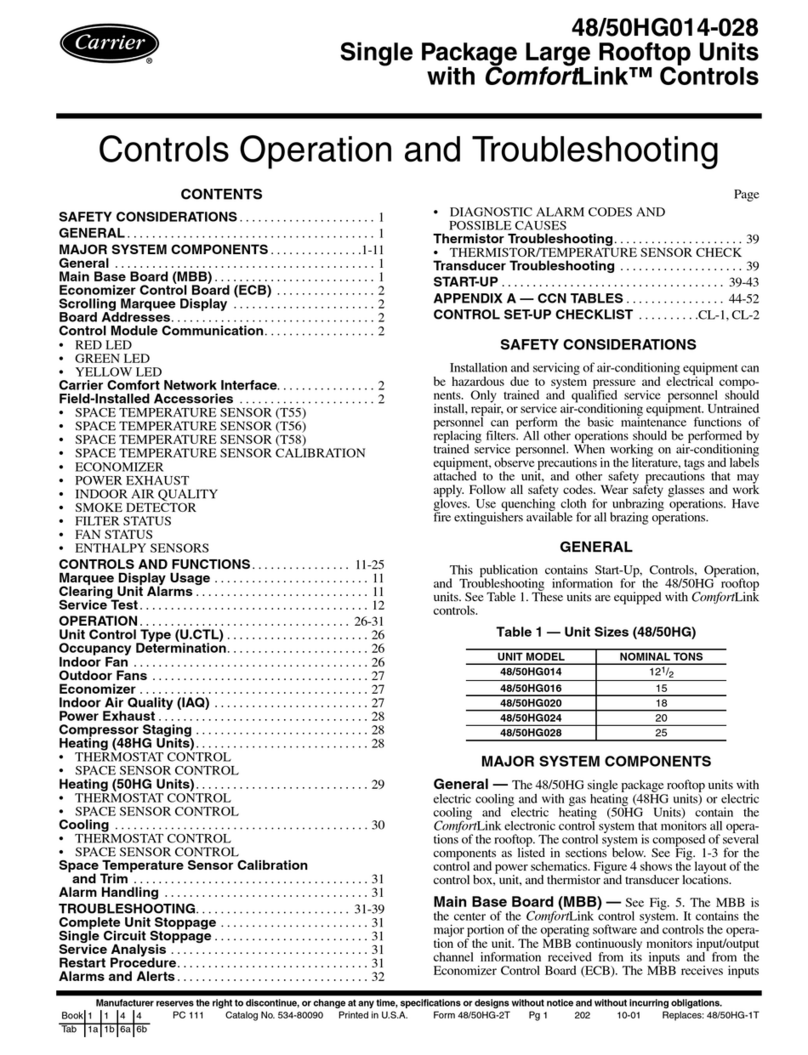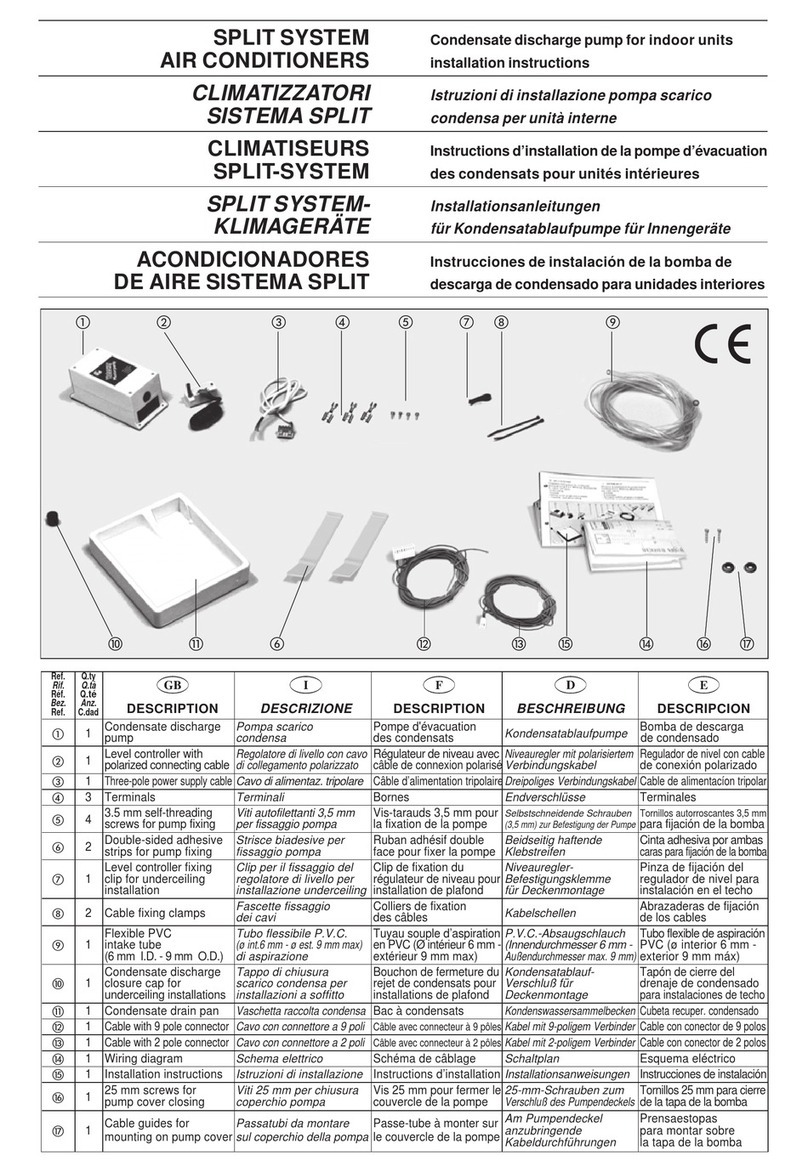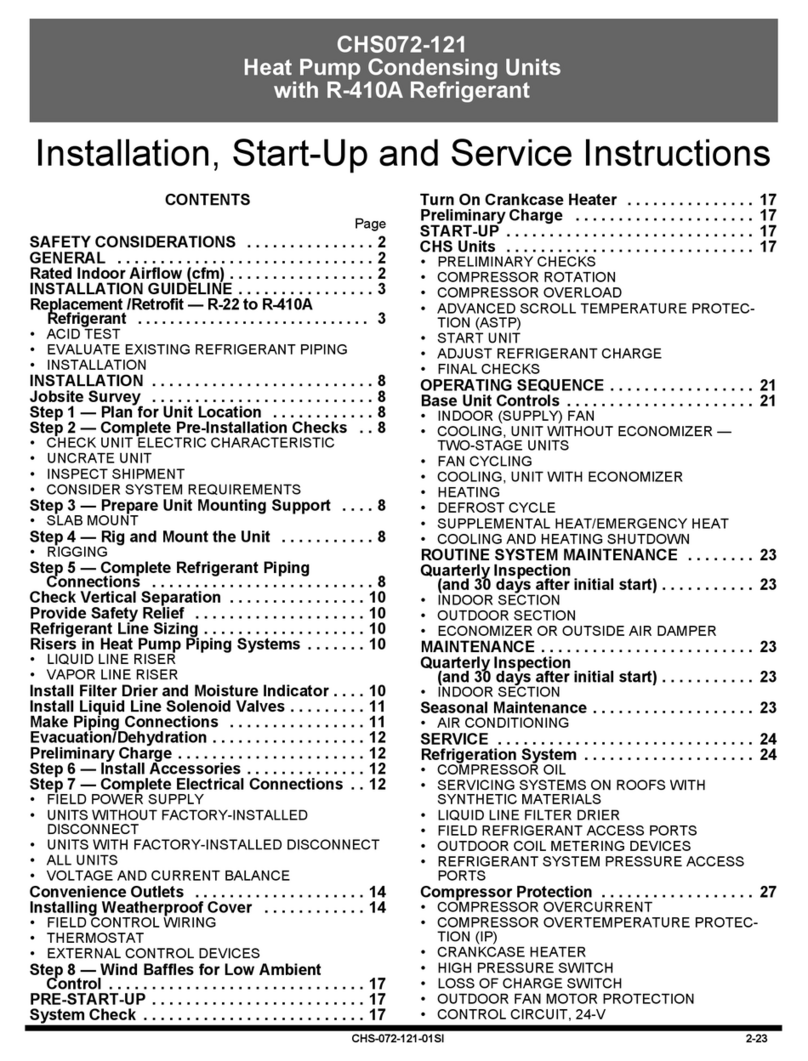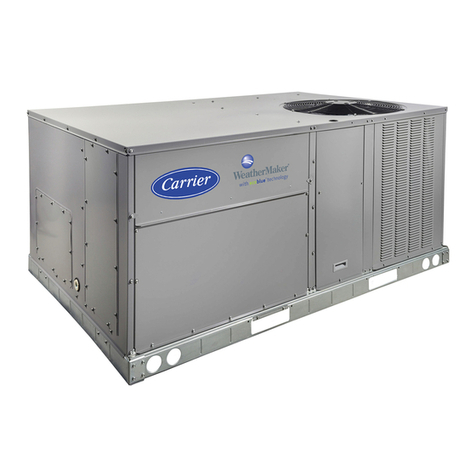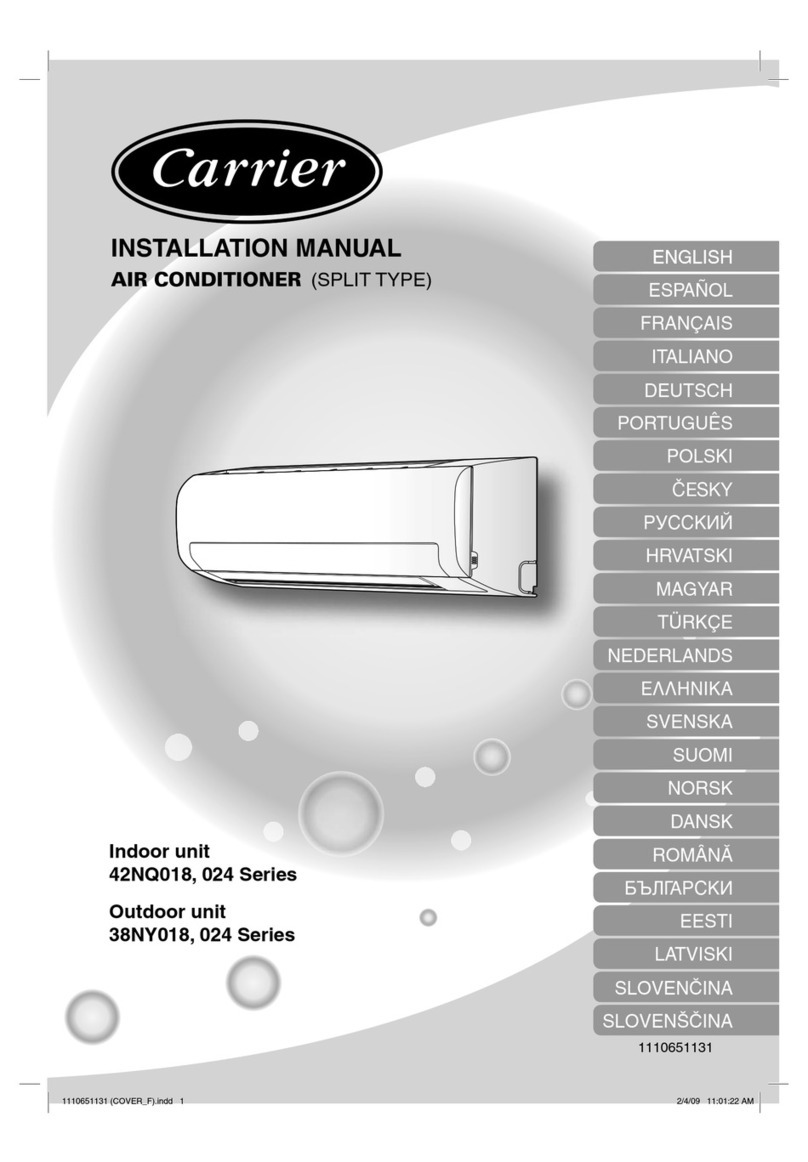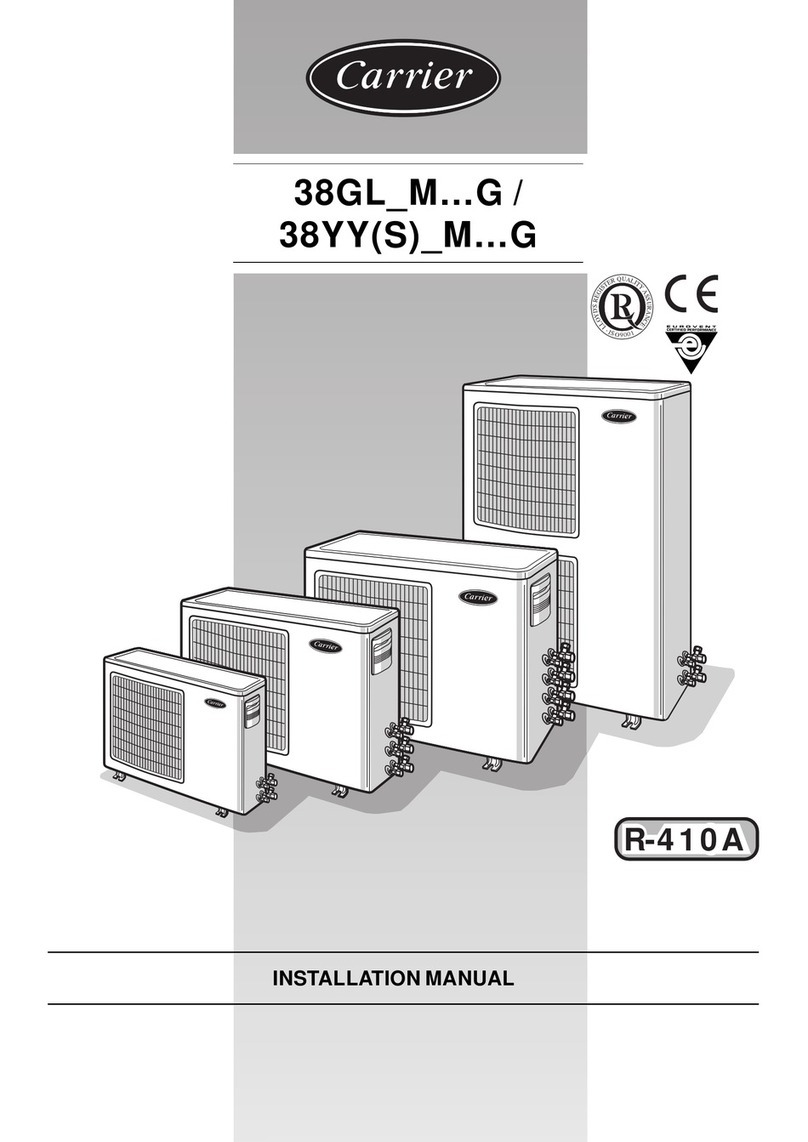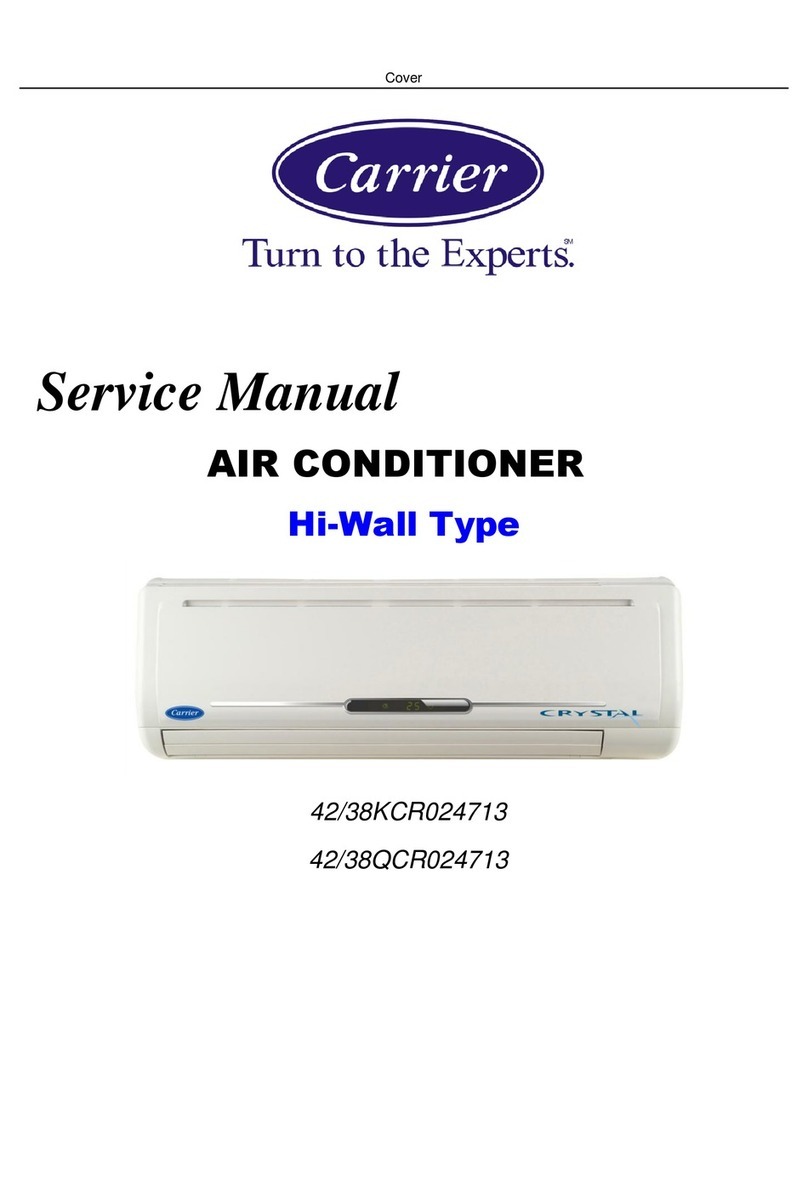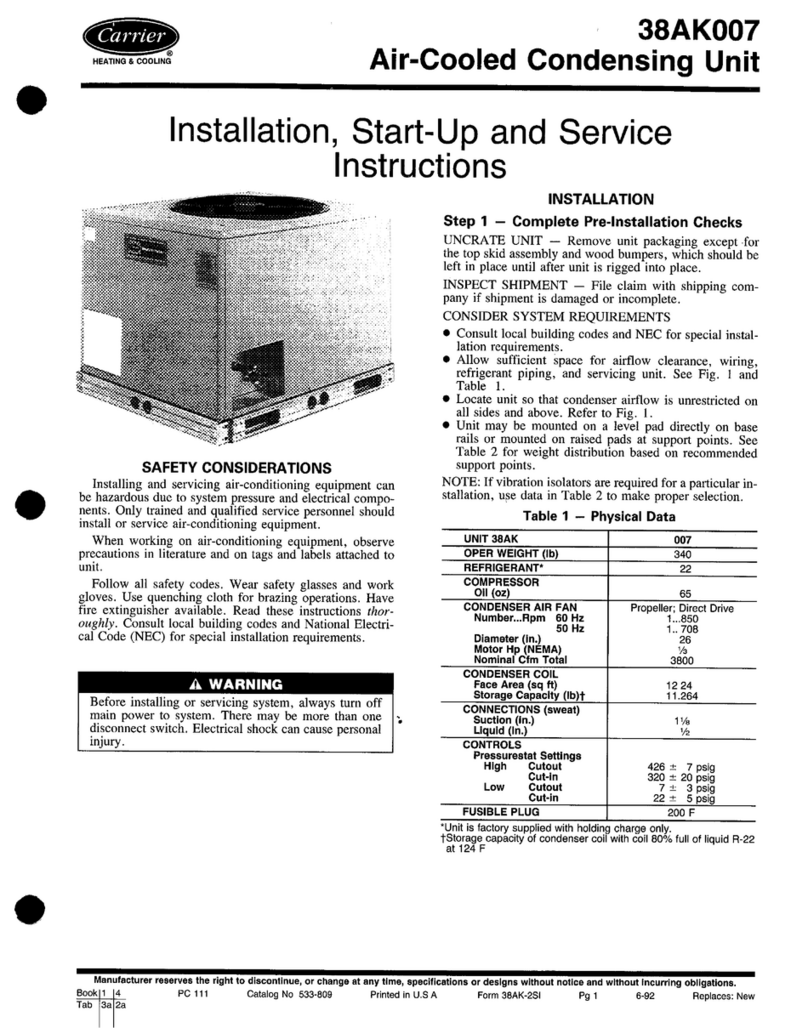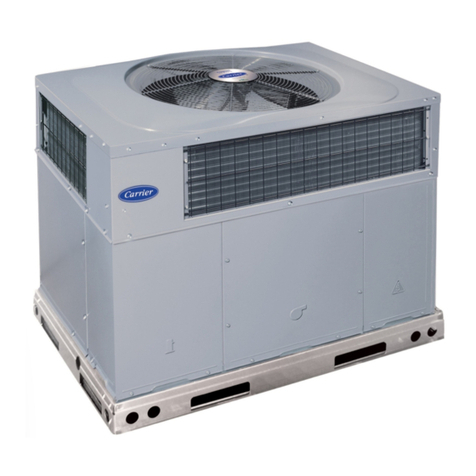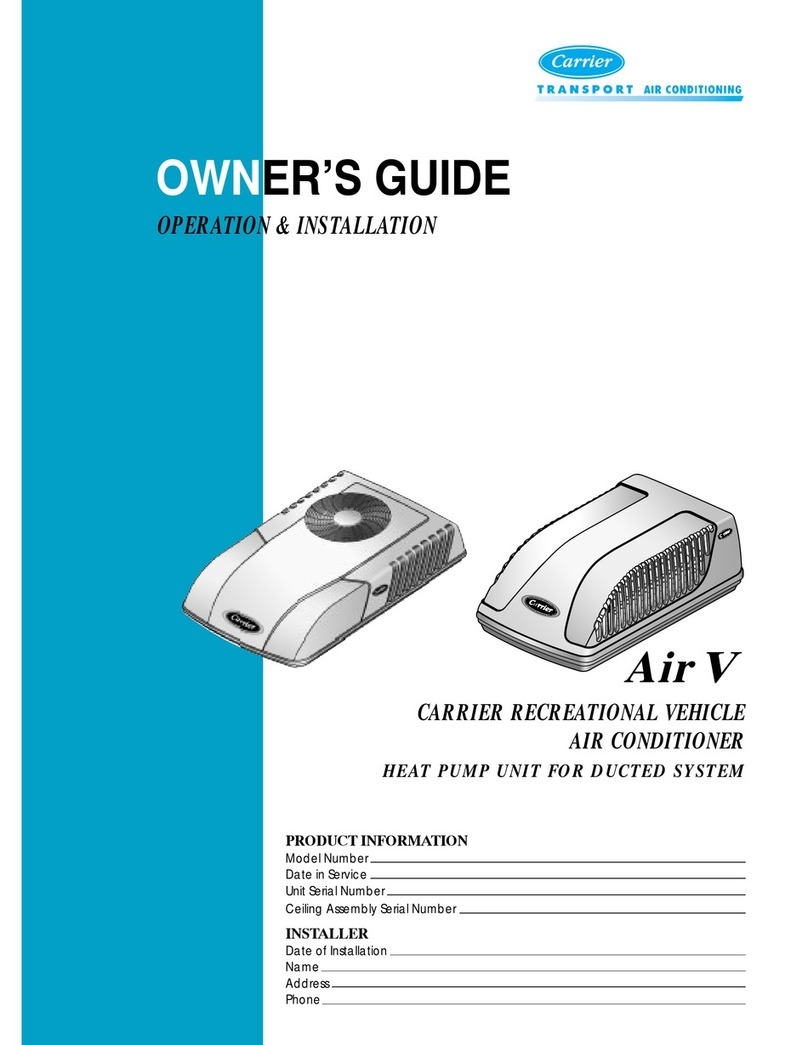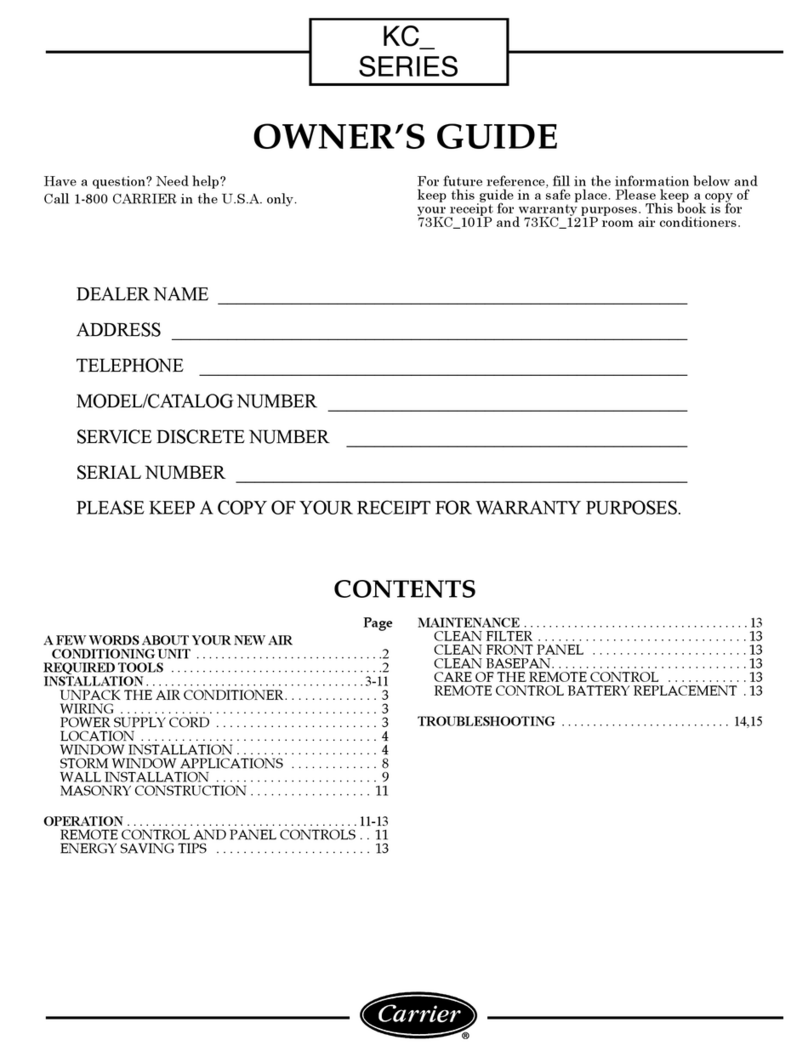
Manufacturer reserves the right to discontinue, or change at any time, specifications or designs without notice and without incurring obligations.
Catalog No. 04-53500263-01 Printed in U.S.A. Form 50TC-18-29-H-03SI Pg 1 9-19 Replaces: 50TC-18-29-H-02SI
Installation Instructions
CONTENTS
SAFETY CONSIDERATIONS . . . . . . . . . . . . . . . . . . . . 1
GENERAL . . . . . . . . . . . . . . . . . . . . . . . . . . . . . . . . . . . 2
Rated Indoor Airflow (cfm) . . . . . . . . . . . . . . . . . . . . . 2
INSTALLATION. . . . . . . . . . . . . . . . . . . . . . . . . . . . . . 16
Job-Site Survey . . . . . . . . . . . . . . . . . . . . . . . . . . . . . 16
Step 1 — Plan for Unit Location . . . . . . . . . . . . . . . . 16
• ROOF MOUNT
Step 2 — Plan for Sequence of Unit Installation . . . 16
• PAD-MOUNTED INSTALLATION
• FRAME-MOUNTED INSTALLATION
• CURB-MOUNTED INSTALLATION
Step 3 — Inspect Unit . . . . . . . . . . . . . . . . . . . . . . . . 16
Step 4 — Provide Unit Support. . . . . . . . . . . . . . . . . 16
• SLAB MOUNT
• ROOF CURB MOUNT
• ALTERNATE UNIT SUPPORT (IN LIEU OF CURB
MOUNT)
Step 5 — Rig and Place Unit . . . . . . . . . . . . . . . . . . . 21
• POSITIONING ON CURB
Step 6 — Field Fabricate Ductwork . . . . . . . . . . . . . 21
Step 7 — Horizontal Duct Connection . . . . . . . . . . . 21
Step 8 — Install Outside Air Hood (Factory
Option) . . . . . . . . . . . . . . . . . . . . . . . . . . . . . . . . . . 22
• TO REMOVE THE HOOD PARTS PACKAGE:
Step 9 — Install External Condensate Trap and
Line . . . . . . . . . . . . . . . . . . . . . . . . . . . . . . . . . . . . . 23
Step 10 — Make Electrical Connections . . . . . . . . . 23
• FIELD POWER SUPPLY
• UNITS WITHOUT FACTORY-INSTALLED NON-
FUSED DISCONNECT
• UNITS WITH FACTORY-INSTALLED NON-FUSED
DISCONNECT
• ALL UNITS
• CONVENIENCE OUTLETS
• FACTORY-OPTION THRU-BASE CONNECTIONS
• UNITS WITHOUT THRU-BASE CONNECTIONS
• FIELD CONTROL WIRING
• THERMOSTAT
• UNIT WITHOUT THRU-BASE CONNECTION KIT
• HEAT ANTICIPATOR SETTINGS
• TRANSFORMER CONNECTION FOR 208-V POWER
SUPPLY
Electric Heaters . . . . . . . . . . . . . . . . . . . . . . . . . . . . . 28
• LOW-VOLTAGE CONTROL CONNECTIONS
Humidi-MiZer® Control Connections . . . . . . . . . . . .29
• HUMIDI-MIZER – SPACE RH CONTROLLER
EconoMi$er® X (Factory-Installed Option). . . . . . . .31
• PRODUCT DESCRIPTION
• SYSTEM COMPONENTS
• SPECIFICATIONS
•OUTPUTS
• ENVIRONMENTAL
• ECONOMIZER MODULE WIRING DETAILS
• S-BUS SENSOR WIRING
• CO2 SENSOR WIRING
• INTERFACE OVERVIEW
• USER INTERFACE
•KEYPAD
• MENU STRUCTURE
• SETUP AND CONFIGURATION
• TIME-OUT AND SCREENSAVER
• ENTHALPY SETTINGS
• TWO-SPEED FAN OPERATION
• CHECKOUT
• TROUBLESHOOTING
Staged Air Volume (SAV™) with Variable Frequency
Drive (Factory Option) . . . . . . . . . . . . . . . . . . . . . .44
PremierLink™ Control . . . . . . . . . . . . . . . . . . . . . . . .44
RTU Open Control System. . . . . . . . . . . . . . . . . . . . .44
Wiring Diagrams . . . . . . . . . . . . . . . . . . . . . . . . . . . . .44
Smoke Detectors. . . . . . . . . . . . . . . . . . . . . . . . . . . . .56
• RETURN AIR SENSOR TUBE INSTALLATION
• SMOKE DETECTOR TEST MAGNET
• ADDITIONAL APPLICATION DATA
Step 11 — Adjust Factory-Installed Options . . . . . .57
• ECONOMI$ER® IV OCCUPANCY SWITCH
Step 12 — Install Accessories . . . . . . . . . . . . . . . . . .57
Step 13 — Check Belt Tension . . . . . . . . . . . . . . . . .57
• BELT FORCE — DEFLECTION METHOD
• BELT TENSION METHOD
Pre-Start and Start-Up . . . . . . . . . . . . . . . . . . . . . . . .58
START-UP CHECKLIST . . . . . . . . . . . . . . . . . . . . .CL-1
SAFETY CONSIDERATIONS
Installation and servicing of air-conditioning equipment can be
hazardous due to system pressure and electrical components. Only
trained and qualified service personnel should install, repair, or
service air-conditioning equipment.
50TC units for installation in the United States contain use of Carrier's Staged Air Volume
(SAV™) 2-speed indoor fan control system. This complies with the U.S. Department of
Energy (DOE) efficiency standard of 2018.
50TC units for installation outside the United States may or may not contain use of the SAV
2-speed indoor fan control system as they are not required to comply with the U.S.
Department of Energy (DOE) efficiency standard of 2018.
For specific details on operation of the Carrier SAV 2-speed indoor fan system refer to the
Variable Frequency Drive (VFD) Factory-Installed Option 2-Speed Motor Control Installation,
Setup, and Troubleshooting manual.
WeatherMaker®50TC 18-29
Single Package Rooftop with Cooling Only
Horizontal Airflow Unit
with Puron®(R-410A) Refrigerant
